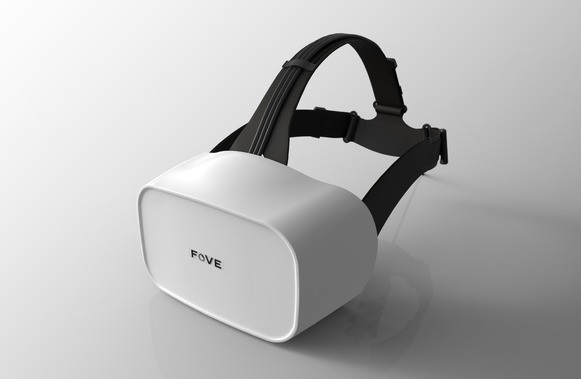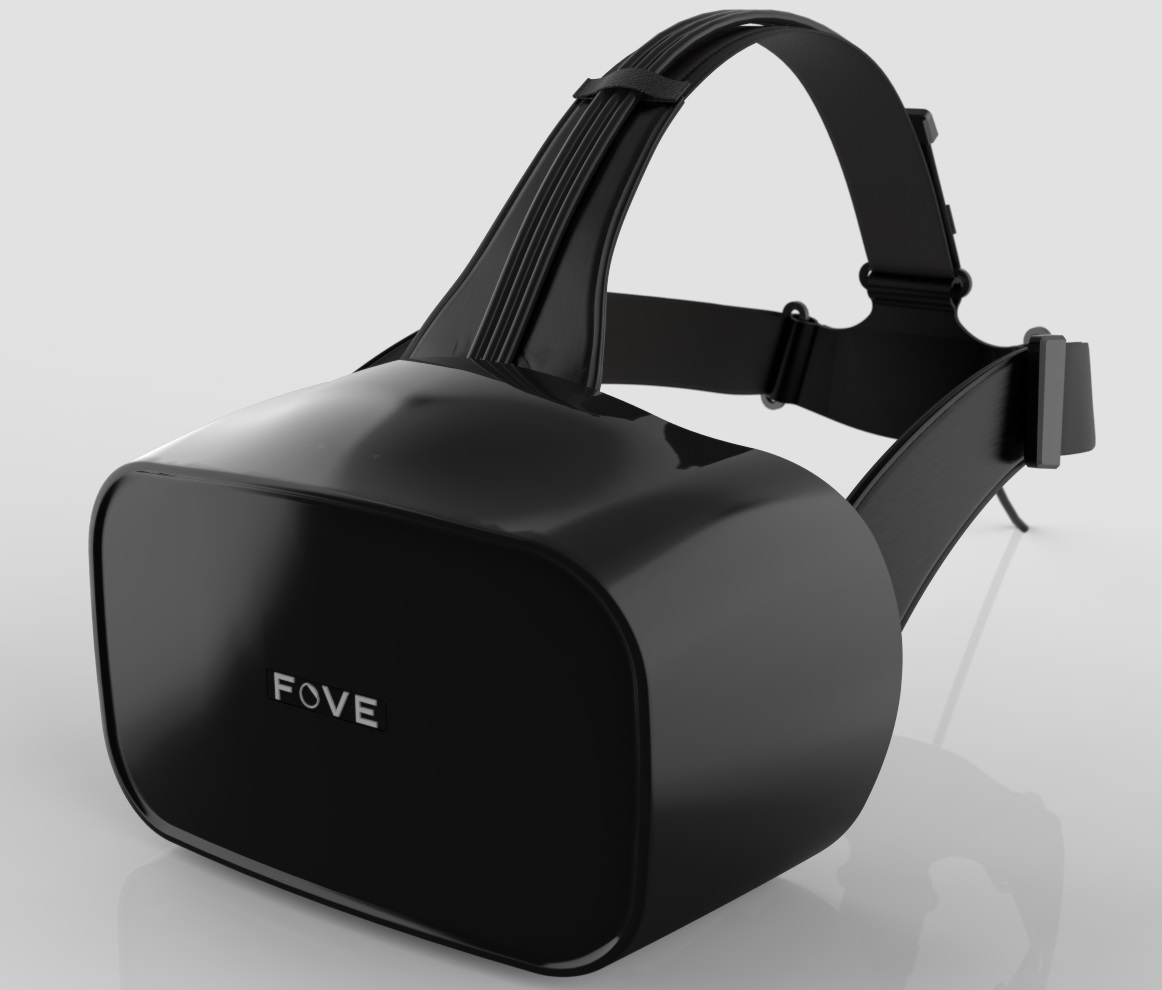Fove Opens Pre-Orders For 'Fove 0' Eye-Tracking VR Developer HMD
Fove is finally ready to start taking pre-orders for its eye-tracking VR HMD. The company plans to fulfill Kickstarter backers’ orders before the end of the year, and new pre-orders will ship in 2017.
Fove revealed the Fove VR HMD through a Kickstarter campaign on May 19, 2015. Back then, Fove’s VR HMD sounded too good to be true, but the company managed to nearly double its original $250,000 ask to produce its developer kit VR headset with eye-tracking technology. By the time the campaign wrapped up on July 4, 2015, Fove had raised $480,650 from 1,480 backers. The HMD designer also managed to wrangle an investment from Samsung Ventures for an undisclosed amount in the same time frame. That investment ensured that Fove would pursue Lighthouse tracking for its VR HMD despite falling short of the Lighthouse stretch goal of $700,000.
Fove had a working prototype of its eye-tracking VR HMD before the Kickstarter campaign started (we tried a later prototype at CES 2016). The company expected that it could deliver developer kits to its backers by May 2016, but the company ran into a roadblock when its supplier discontinued the eye-tracking cameras it used for the prototype. Fove had to source new cameras and redesign the HMD for them. The company also decided that it had to drop the Lighthouse certification because the process would delay the headset even longer.
At Siggraph in late July, Fove revealed the redesigned Fove VR HMD, but it did not share the HMD's specs. The company up with the full specifications in September, along with a new name for the headset: Fove 0. It also revealed that pre-orders for the developer kits would open on November 2 at 8am PST, but the company kept the price undisclosed.
“Following successful demos of the FOVE 0 at Tokyo Game Show, we’re excited to showcase the final version of the headset during VRDC in San Francisco,” said Yuka Kojima, FOVE co-founder and CEO. “We believe that eye tracking capability is the next big milestone in the VR industry, and we’re excited to be at the forefront of that technology."
As is often the case, Kickstarter backers who paid for their developer kits long in advance ended up getting a great deal on the hardware. The earliest backers paid as little as $349 for their headsets, and the final kits are going out for $599. Fove is also offering a $50 discount for customers who order Fove 0 kits before November 8 at 8am PST.
The Fove 0 HMD features a single 70Hz WQHD display, split across two eyes, that offers a 90-100-degree field of view. The Fove 0 also includes 120fps infrared eye-tracking systems for each eye.
Get Tom's Hardware's best news and in-depth reviews, straight to your inbox.
| Header Cell - Column 0 | Fove 0 HMD |
|---|---|
| Display: | WQHD OLED (2560 x 1440) |
| Display frame rate: | 70Hz |
| Field of view: | 90° ~ 100° |
| Tracking sensor: | Orientation tracking, Position tracking |
| Eye tracking sensor: | 120fps infrared eye tracking system x2, less than 1° accuracy |
| Weight: | 520g |
| Connections: | HDMI 1.4 / USB 3.0 / USB 2.0 |
| Accessories: | Position tracking camera / Face cushion |
Eye-tracking is a highly coveted advancement for VR, and it appears we won’t have to wait much longer to experience it. Fove said that Kickstarter backers can expect their Fove 0 HMDs to ship by the end of the year. New orders will ship in early 2017.
You can order your own Fove 0 VR HMD from www.getfove.com.
| Header Cell - Column 0 | Minimum Hardware Requirements |
|---|---|
| Operating System: | Windows 8.1 64-bit, Windows 10 64-bit |
| CPU: | Intel Core i5-4590 or greater |
| GPU: | NVIDIA GeForce GTX 970 / AMD Radeon R9 290 or greater |
| RAM: | 8GB or greater |
| Interface: | HDMI 1.4 / USB 3.0 / USB 2.0x2 |
Kevin Carbotte is a contributing writer for Tom's Hardware who primarily covers VR and AR hardware. He has been writing for us for more than four years.
-
rhysiam The first company to release a VR HMD with 4K @ 80-90hz or better, combined with solid eye tracking and well implemented foveated rendering (making it possible to render all those pixels with a single card) gets my money.Reply
Nvidia are already touting foveated rendering on Pascal, we already have phones with 4K displays (though 60hz, admittedly), we have multiple DP 1.3 cards which can output 4K @ >60hz, and now we have a soon to be released headset with eye tracking. Whoever can bring all those things together will have a hugely compelling product IMHO. -
anathema_forever I totally agree but the cost to entry for this is probably far to high for the next few years.Reply -
kcarbotte Reply18817715 said:The first company to release a VR HMD with 4K @ 80-90hz or better, combined with solid eye tracking and well implemented foveated rendering (making it possible to render all those pixels with a single card) gets my money.
Nvidia are already touting foveated rendering on Pascal, we already have phones with 4K displays (though 60hz, admittedly), we have multiple DP 1.3 cards which can output 4K @ >60hz, and now we have a soon to be released headset with eye tracking. Whoever can bring all those things together will have a hugely compelling product IMHO.
Eventually, everyone will pull all those things together.
4K is shooting for low hanging fruit. Nothing about what you described is hard, nor far off.
8K, 16K and beyond are where things get interesting again. That's when engineers have to actually solve problems, not just iterate.
-
rhysiam Reply
I'm not saying 4K is the end goal by and stretch... bring on 16K VR HMDs!! But surely they're a good few years away yet. Even DP 1.4 maxes out at 8K @ 60hz, and that's with compression and basic 24bit/px colour. I don't claim to know much about OLED engineering and design, but surely increasing pixel density to that extent is going to take time.18819169 said:Nothing about what you described is hard, nor far off.
8K, 16K and beyond are where things get interesting again. That's when engineers have to actually solve problems, not just iterate.
All I'm saying is that 4K @ 90hz + eye tracking and a decent foveated rendering solution is good enough to convince me to part with my money and jump into VR. Of course, hardware is only half the story though. -
computerguy72 An FOV of 150+ degrees with decent pixel density coupled with highly comfortable HMD hardware seems to be the next sweet spot to me. Video cards and new rendering techniques are still in moore's law territory so foveated rendering is probably something that will be more of an add-on than an enabling technology. It will be interesting to see who steps up and really innovates VR technology.Reply

